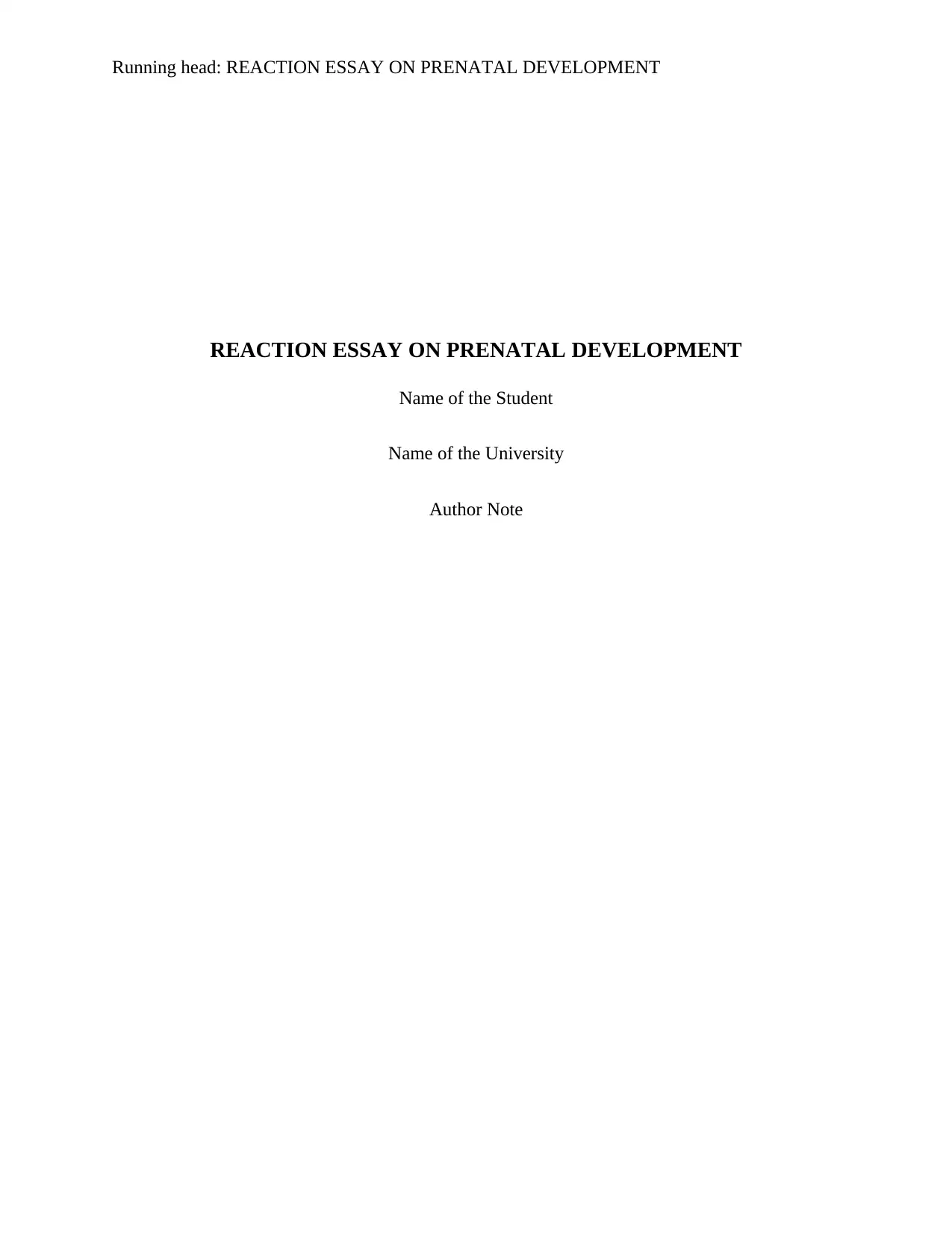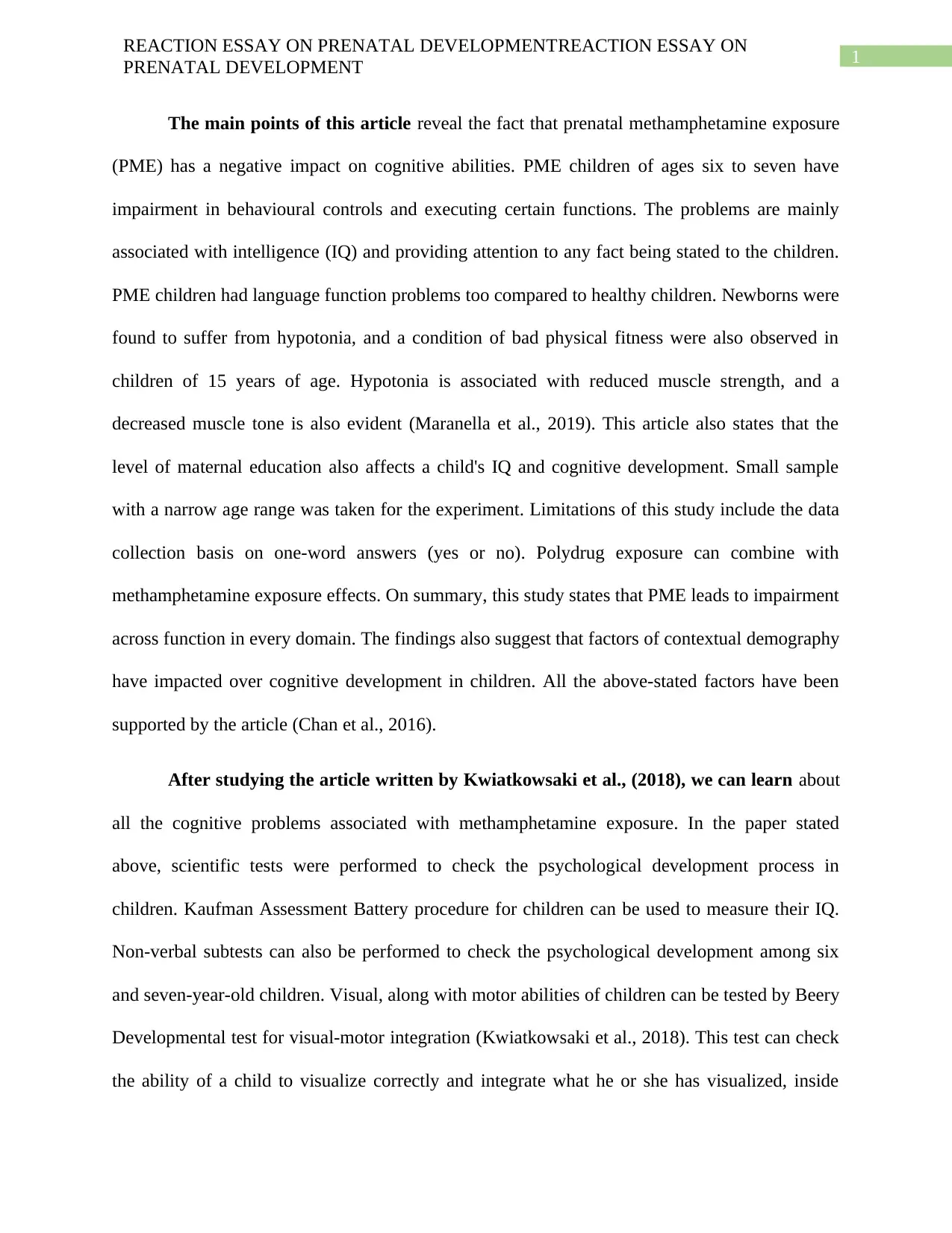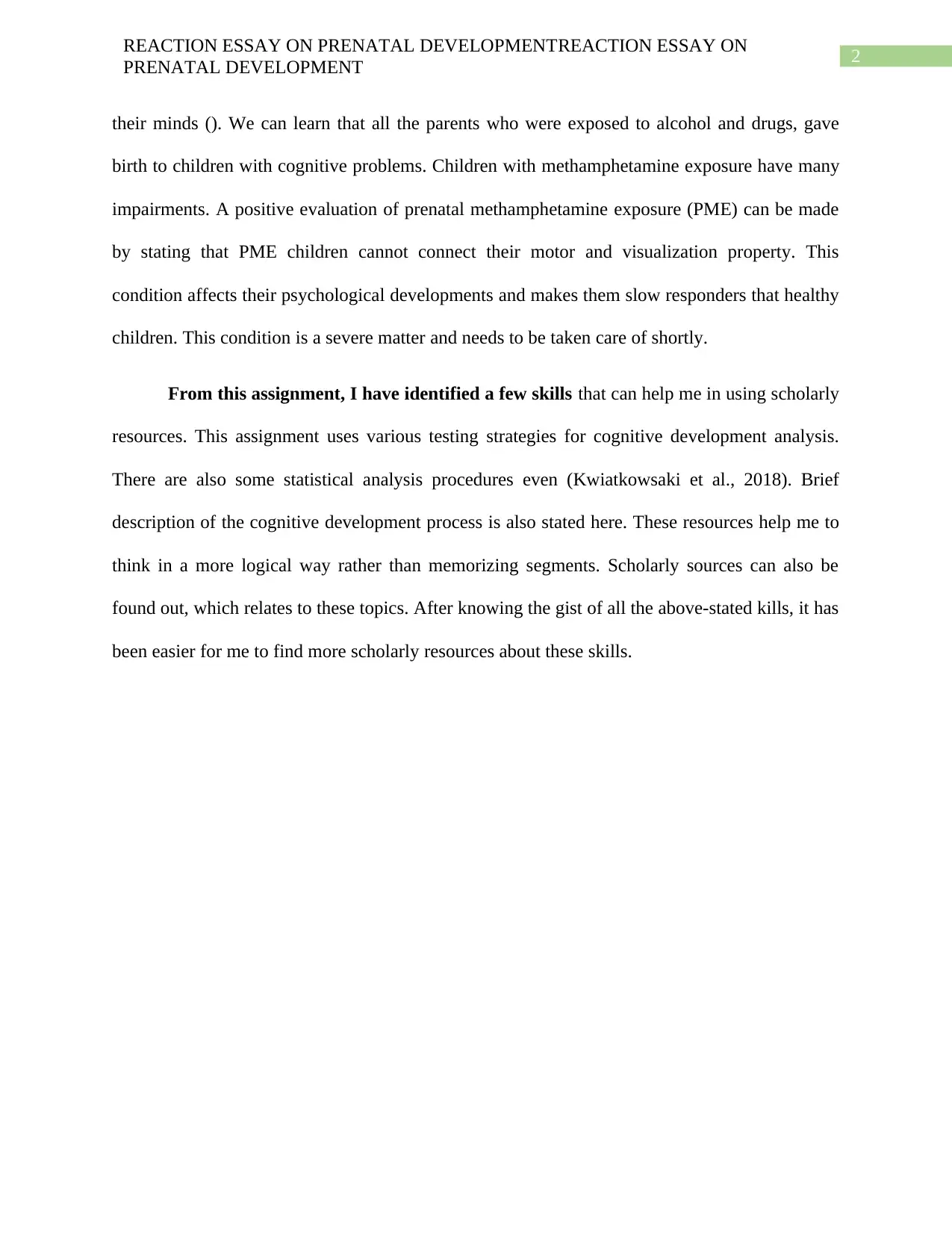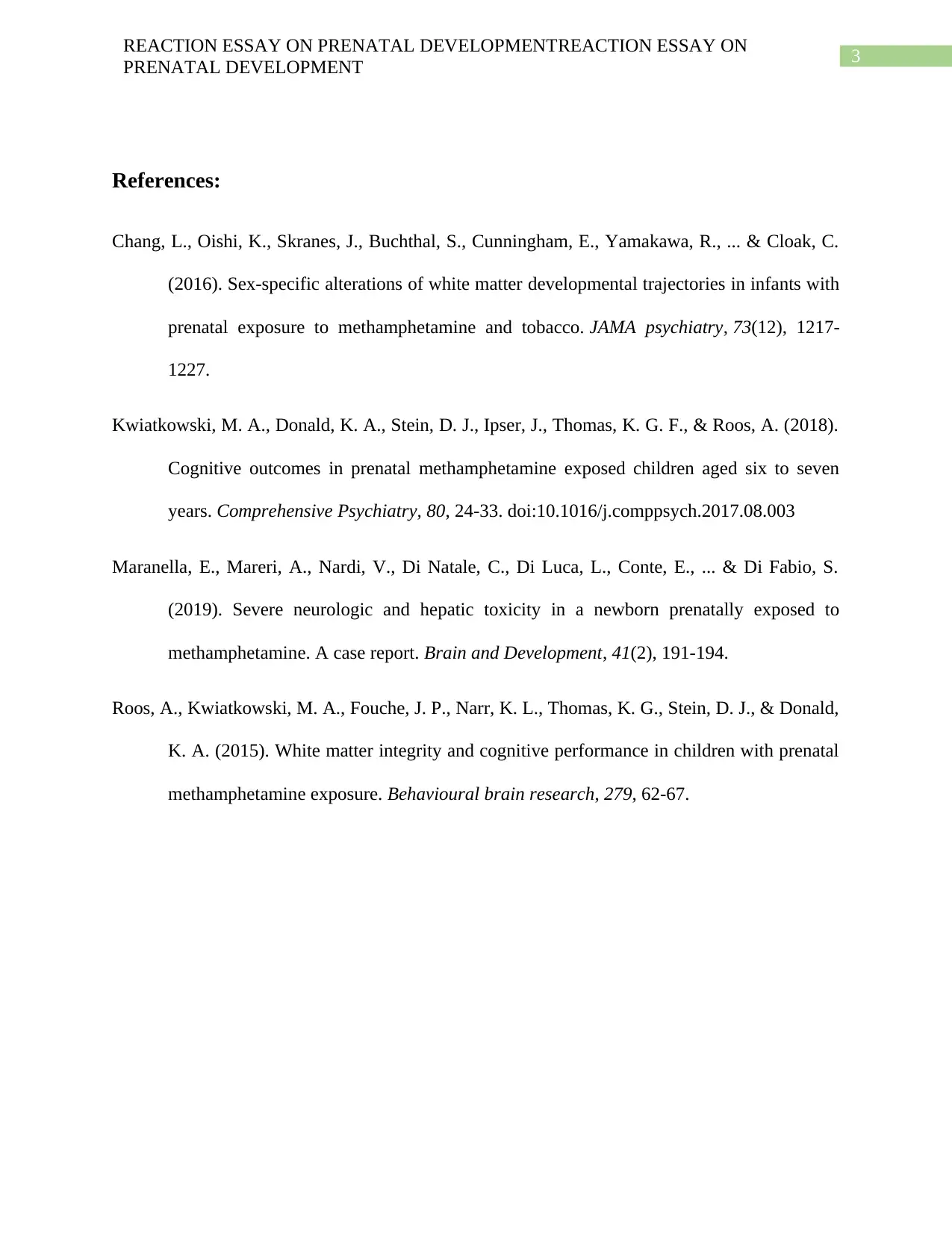PSYC 210 - Reaction Essay: Prenatal Development Article Analysis
VerifiedAdded on 2022/11/09
|4
|843
|119
Homework Assignment
AI Summary
This reaction essay analyzes a scholarly article concerning the cognitive outcomes in children exposed to prenatal methamphetamine exposure (PME). The essay summarizes the article's findings, which indicate that PME can lead to impairments in cognitive abilities, including issues with intelligence, attention, and language function. The study, which involved children aged six to seven, also highlighted the impact of maternal education on cognitive development. The essay further discusses the testing methods used to assess cognitive development, such as the Kaufman Assessment Battery and the Beery Developmental Test of visual-motor integration. The author reflects on the skills gained from this assignment, including the ability to identify and utilize scholarly resources, and the understanding of statistical analysis in cognitive development research. The essay concludes by emphasizing the importance of addressing the cognitive challenges faced by children with PME and their implications on their psychological development.
1 out of 4









![[object Object]](/_next/static/media/star-bottom.7253800d.svg)